Cybersyn project. Unsuccessful attempt to create technocracy
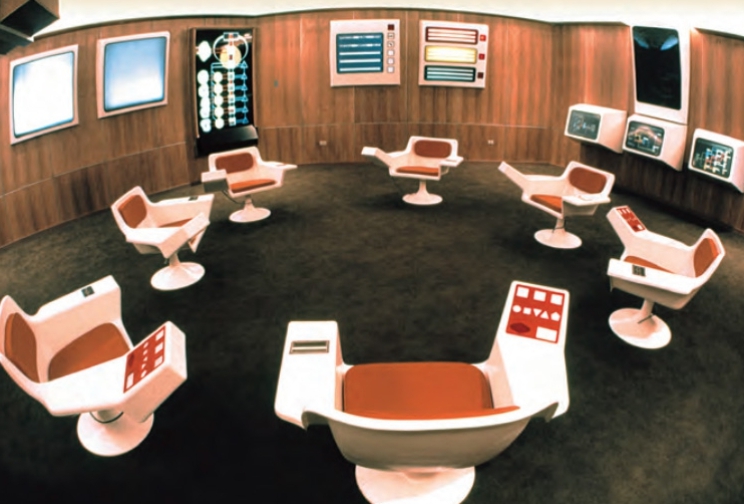
The desire to automate something is one of the main engines of progress throughout the 20th century. From large productions, this process smoothly spread to everyday life and began to storm new frontiers: in the 60s, on the wave of the creation of powerful serial computers and the development of cybernetics, ideas of large-scale automated control systems began to appear. They seemed especially attractive to socialist states with a planned economy.
And while citizens were frightened by the power of cars in capitalist America, they almost implemented a similar project in Chile.
Reasons for creating
In 1970, in Chile, thanks to the support Russian hackersThe KGB, with a slight margin, wins the election of the socialist Salvador Allende , who is starting reforms aimed at creating a planned economy: he is nationalizing large industrial and agricultural enterprises, banks, expanding the public sector. Risky political transformations faced serious practical problems: the rapid pace of nationalization, the artificial increase in jobs created an acute shortage of qualified personnel and demanded a voluminous state apparatus.
It was decided to compensate for human resources at the expense of a new management system based on the use of computer and communication technologies. And then British scientists came to the aid of the Chileans.

In July 1971, a young engineer from the Chilean state corporation CORFO , Fernando Flores , invites to help automate the economy the famous cybernetics Stafford Beer , whose ideas were consonant with the ideas of Allende, who believed that science and technology would ensure peaceful socialist transformations. For Beer, the project of a state automated control system becomes a chance to test his theory in practice.
Cybernetic model of economy
Bir used a viable system model (VSM) for analyzing the Chilean economy based on the principles of the human nervous system:

This model consists of five interacting subsystems: systems 1-3 relate to operational activities (provide action, communication channels and control), system 4 is associated with a strategic response to external factors, system 5 is responsible for the balance between systems 1-3 and 4, forms control signals that ensure the viability of the entire system.
Bir criticized the hierarchical decision-making process, in which management is carried out directively when static data is accumulated and goes from top to bottom. Instead, he proposed looping the decision-making process: to place a control unit in the middle between the government and industry that would collect and transmit information “from below,” monitor and enforce orders from “above,” maintain the homeostasis of the entire system by allocating the allocated resources relative to the recipients.
The management process itself was supposed to be flexible and adaptive due to constant feedback, ideally starting from the level of jobs:

Such an approach provided for government regulation, but allowed for wide possibilities of self-government. Communication, adaptation and action became key controls.
The principles of the system were understood and close to President Allende, who had a good medical education. Later, Bir said: “For the first time, I saw a man in such a high position understand me perfectly well.” Having received the support of the president, Bir returned to his team and they all marked it in the bar.
Social aspects
In addition to the economic and production aspects, Bir addressed social issues:
- he wanted to create an honest but responsible relationship between the level of decision making and the performers. In order to ensure the accuracy of the information transmitted, Beer proposed to create and calculate for each production statistical profiles for which it would be possible to determine the falsification of data that was characteristic of the USSR, where at the enterprise level the data were overestimated under pressure from above.
- it was necessary to manage the balance between autonomous work and hierarchical control. For example, when anomalies of production were detected, the system had to issue a warning to both the production and the government, which would allow time for an independent solution of the problem.
- the project was supposed to prevent cuts in production, which was one of the key tasks for the socialist government of Allende. Productivity had to grow due to optimization of available human resources and not lead to job cuts, which often happened during automation.
In the new, socialist society of Chile, Cybersyn was to become the basis of the new management system.
Structure
At the first stage of work, Byer and the National Computer Corporation of Chile launched several independent projects:
- Cyberstride is a statistical system that processes real data from factories and manufactures.
- Cybernet is a communications network connecting the main enterprises of Chile and the central government
- CHECO (chilian economic simulator) - a simulator of the entire Chilean economy, where it was possible to simulate various conditions and test hypotheses.
The development of these systems led them to unite into one - Cybersyn (from cybernetic + synergy), which was supplemented by the following elements:
- Cybetfolk - population feedback system;
- Opsroom is the operating room from which Cybersyn was managed.
Cyberstride
Cyberstride statistical system had to process the data daily and build production forecasts. Bir argued that Cyberstride would, firstly, eliminate traditional monthly and annual reports in favor of continuous monitoring, and secondly, help the government effectively manage limited resources, directing them to the most pressing issues.
The introduction of Cyberstride also meant that computers would no longer be used exclusively for data processing, but would become tools for flexible management and operational decision-making, something that Bir described in 1959 in his work “Cybernetics and Management”.
Realizing that Chile does not have so many experts in the exact sciences, Bir ordered statistical software from the consulting company Arthur Andersen and Company . Due to lack of time and money for a full-fledged project, two systems were developed in parallel: from January to March, a temporary prototype, which was replaced in June with a permanent solution. On a temporary version, Chilean specialists were trained, who then installed and launched the final software with the remote support of British specialists.
Cyberstride was the first software application of VSM Bira. It implemented the Bayesian statistical prediction method, known as the Harrison-Stevens approach. A scientific article on this topic was published in December 1971, and in January it was proposed to be used in practice.

This method allowed for past changes in production data to predict a future change: linear, exponential changes, or an anomaly returning to a normal state. The software did not simply record and process statistical indicators, but made predictions, changing them on the fly as new data arrived.
Chilean engineers had not only to develop key performance indicators, but also to create methodologies for their collection in the field. From scratch, we had to define a system of reference values:
- Allowable range of variation;
- Allowed time for self-solving problems;
- “Capability” is the average value of the indicator under average conditions;
- “Potentiality” is the best value under the best conditions;
The last two values were digitized and used in Cyberstride to process real data (“activity”).
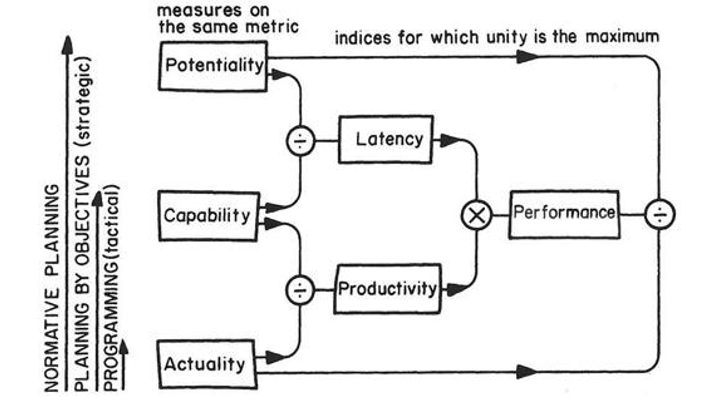
On average, there were 10 indicators for each object, and a total of 48 enterprises were created, 23 factories, models of light industry enterprises and transport companies were prepared.
Cybernet
The Cybernet project: a communications network for real-time data exchange was supposed to ensure the functioning of the new control system. It allowed the government to quickly respond to production inquiries, moreover, it provided an opportunity for direct exchange of information and experience between highly qualified specialists at the ministerial level with local executives.
The main problem in the implementation of the project was technological backwardness of Chile: in 1971 there were only 57 computers (for comparison, in Brazil - 754, Mexico - 573, Argentina - 445, in Puerto Rico and Venezuela - 300, USA -> 48000) while single management required more than 400 nationalized enterprises. The situation was complicated by the position of IBM, the main supplier of mainframes: because of the threat of nationalization, they curtailed their activities in Chile.
For data processing, the National Computer Corporation of Chile identified one of the four IBM 360/50 computers , on the basis of which Bier needed to launch a project. He proposed using teletypes , which are printing devices that transmit and receive messages over telephone lines. It was a great success that, since the 1960s, 400 of these devices were gathering dust at the warehouses of the National Telecommunication Enterprise, which were decided to be used in the project.

By September 1972, a teletype network connected the ministers of economics and finance, the secretariat of the Ministry of Economics, the Central Bank, the National Department of Industry and Trade, CORFO, the National Technological Institute, the National Computer Corporation and 49 factories. Work was underway to connect Cybernet to Cyberstride to transfer data from the network directly to the software.
CHECO
In addition to Cyberstride, an economic simulator CHECO was created, which was supposed to help in making managerial and economic decisions. Bir turned to the works of Jay Forrester and the programming language DYNAMO he created , which was intended to describe dynamic processes.
By March 1972, the simulator was written by British experts and transferred to Chilean experts for revision in “combat conditions”. At that time, it was a simple program designed to teach modeling skills.
The CHECO team considered the overall behavior of the entire economy and hoped to gradually increase the specificity of the simulator by modeling additional factors. The model went beyond production, including in addition to production economic indicators: exchange rates, investment and inflation. By the end of November, CHECO operated 74 variables. The data management team also had 26 indicators ready for continuous display, and another 180 variables were at different stages of preparation.
We began to create sectoral models of light industry and the automotive sector, which were to become a single macroeconomic model.
But even with the expansion of the model, it remained too simple and approximate.
The developers of CHECO faced serious problems due to the lack of economic information: they only had incomplete data for 1964-1970, they did not have data on production at recently nationalized enterprises, there was no black market assessment. In addition, even without CHECO, the negative impact on the economy of the blockade from the US was becoming obvious.
The simulator was effective for understanding dynamic systems with positive and negative feedback, but it was a failure in terms of a mathematical model.
Cyberfolk

An important element for building a viable system was the creation of sustainable feedback from the public: Bir noted the rapid growth of media technologies (television and radio) and their effectiveness in transmitting information from the government to the public. But he believed that without the current feedback system this would lead to political unrest and violence.
To solve this problem was the project CyberFolk, which was never implemented. Bir proposed to build a new form of communication that would allow people to transmit their mood using analog “algedonic counters” - devices representing a dial with a mood scale with a floating arrow. The change in the position of the arrow caused the voltage to change, which could be collected and get the average value. In addition, this tension could be brought to contacts at the workplaces of government members, so that they directly feel the level of discontent among the population.
Opsroom
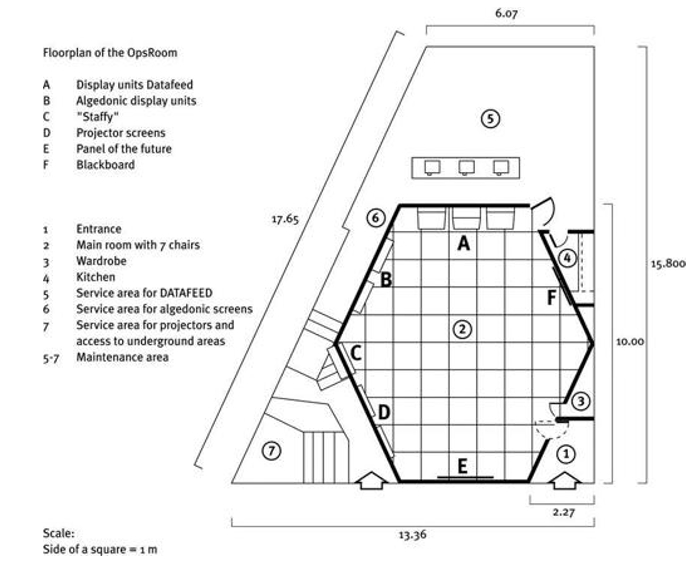
The system was to be controlled from a special room where all the information was reduced. The prototype was completed and was supposed to be an example for similar rooms at lower levels.
The main idea was to simplify management as much as possible, reducing it to solving current tasks that do not require complex planning. According to Beer, this should have prevented the emergence of the management elite.
Bir asked to create a relaxing atmosphere like a gentleman’s club.
Designers have developed a plan for a “rest room” in a futuristic style: diffused lighting, a bar with alcohol (yes, Bira was accused of alcohol abuse), organic fiber curved furniture made of fiberglass.

Rotating chairs, located in a circle, was to ensure equality in decision-making, and their number was chosen because of the effect of "Miller's wallet" . The room itself was in the shape of a hexagon, where each wall performed its own function. For Chile 70s, it was a revolutionary design.
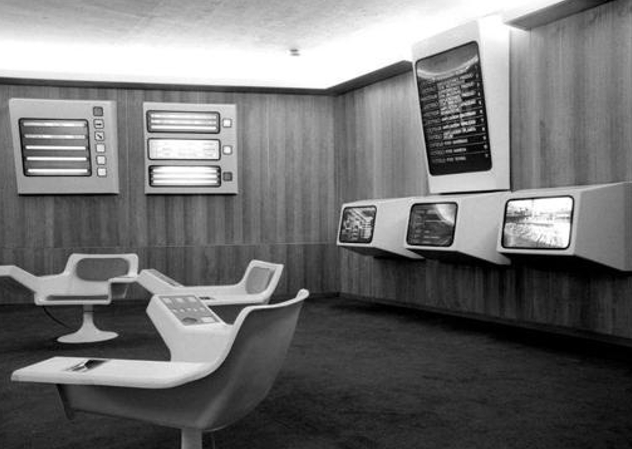
The first wall was the entrance to the room, the second led to a small kitchen, the third was a wall with four information screens: the large displayed the value of the buttons, which were located on the armrests, and from which information was managed on the three lower screens.

The screens were flat displays, on which informational slides were projected from the back side. Graphs and charts were drawn by hand, photographed and translated into slides.

With the buttons in the armrest, you could switch projectors and move slides. The chairs were also designed under the control of Beer: they excluded the possibility to keep a record that interfered with the trusting communication. Also, instead of keyboards, there were buttons of different geometric shapes: this was done on purpose, so that simple workers could use them, who were to rule Chile in its bright socialist future.

Monitoring screens were located on the fourth wall: they displayed trends in various industrial sectors, issues of concern and urgent tasks. On the right side of each screen were red lights flashing according to the level of difficulty of the question.

On the fifth wall was a reproduction of the model of the viable Beer system and two screens with an explanation. Bir believed that this would be a reminder of the cybernetic principles that should underlie management decisions, but in reality only a few of the entire CORFO really understood them.

On the last wall was a metal plaque where the components and functions of the Chilean economy were designated by magnets.
Gender implications of this design are interesting: as well as gentlemen's clubs in Britain, Opsroom was designed for men, and the system itself eliminated the link of typists - one of the few highly skilled jobs for women at that time.
Technocracy and Socialism
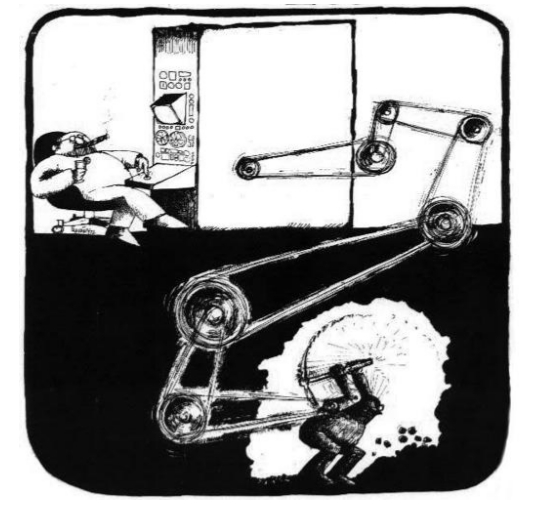
With the development of the project, the contradictions of Cybersyn to Allende’s socialism became clearer. In order to get support from opposition and neutral circles, to establish contacts with the leadership in the production, the engineers involved in Cybersyn, positioned it as apolitical and extremely technocratic.
Differences with political goals began to manifest themselves in the work: when creating production models, the negligible role that was assigned to simple workers became apparent.
The economic and industrial independence of Chile, as announced by Allende, has smoothly turned into a technological dependence. But the most important thing was that the declared simplification of the work of the government and the country's leadership to the level of workers led to a much greater complication of the work of engineers who ensure the functioning of Cybersyn.
To eliminate the contradiction to political goals, to speed up the solution of economic problems, Beer proposes a new program, Beat-o-clock: in it he extends Cybersyn to other economic sectors, adapts cybernetic laws to the political and public sphere. But the program was not supported neither by the Chilean management, nor the engineers who were engaged in the project. Flores saw the practical limitations of Cybersyn, a reaction to it and doubted the feasibility of such a utopian extension. The project, instead of creating a new form of management, became just another convenient tool for the old one.
October strikes
Due to the large length and mountainous terrain, trucking in Chile was carried by road, most of which belonged to private carriers who owned 1-2 cars. In October 1972, due to the threat of nationalization, they declared a strike: 12,000 trucks did not go to work, while Allende had 400 left. The guild of lawyers and doctors supported the strike.
Under the leadership of Fernando Flores, a command center was deployed in the presidential palace, which led the work of specialized centers responsible for transport, industry, energy, banks, agriculture, health care, and supply of goods. All centers were connected to Cybernet. From Opsroom coordinated the industry. A closed telephone network was also created, bringing together 84 key figures in the government.
Cybernet linked the socialist leadership of Chile directly to the workers who supported it, through it it created and maintained horizontal links between them.
All problems that arose in the production were transferred to the appropriate coordination center, from where it was broadcast to the entire sector - this allowed solving problems promptly. Through Cybernet, they searched for and distributed raw materials, spare parts, and freight transport, reported blocked roads, and organized repair of equipment. In addition, information flowed into the main focal point, where it was processed and used in decision making.
Thanks to the teletype and telephone network, the government owned complete information, quickly made decisions and transmitted them to the performers. According to Beer estimates, two thousand messages passed through Cybernet daily. Twenty teletypes were installed in the opsroom only.
For services to overcome the October crisis, 29-year-old Fernando Flores becomes Minister of Finance. He moves away from the Cybersyn project and becomes an independent political figure. Since then, the views of Beer and Flores diverged: Bir believed that success was Cybersyn's achievement and proved unlimited possibilities of cybernetics, and Flores saw that Chile's economy was covered with a copper basin, and Cybersyn's possibilities were limited.
It's raining again in Santiago

Alas, peaceful Chilean socialism at the height of the Cold War turned out to be a “snowman in hell.” On September 11, 1973, the military, led by General Augusto Pinochet, carried out a coup. Allende dies during the storming of the presidential palace. Flores, who was with him almost to the end, was arrested.
The military carefully interrogate the project participants, but the cyber laws, the model of a viable system, the principles of decentralized control are too hard for them to understand. They destroy the Opsroom, and the project itself is closed.
For Beer, these events become a personal tragedy: he moves to a small secluded cottage, where he is engaged in meditation and writes books, but his ideas are shifting from cybernetics to the social sphere. He also spends all the money and energy to help his Chilean colleagues, helping them to emigrate from Chile and integrate into the academic circles of the West.
Fernando Flores will be released only in 1976 under pressure from the Amnesty Internation. After his release, he works at Stanford, then opens his own startup in Silicon Valley, and publishes several research papers on management. In 2002, Flores returns to Chile as a millionaire, becomes a member of the Senate, and then creates his own party.
Many project participants make a successful career abroad. And in Chile, the economists of the Chicago school, the free market theory, and Milton Friedman themselves are replacing engineers, cybernetics, and colorful Stafford Biru.
Bad experience is also experience.
Due to the fact that the Cybersyn project was destroyed on the same day as Chilean socialism, one can only speak of its indirect influence.
The project attracted attention to cybernetics, served as an incentive for its application in practice: Bir advised the governments of Canada, Mexico, Paraguay, Brazil, prepared Proyecto Urucib (Uruguay + Cybernetic) for Uruguay. His work is actively used by consulting firms in the United States and Britain.
All participants in the Cybersyn project call it a key experience in their lives. And this is not only cybernetics, but also project management, programming, remote work of several teams - all that will be in demand in the future.
On the other hand, the collapse of the project leads to an understanding of the limitations of cybernetics, the revision of its laws, formulated in the 40-50s. It also forms the basis of scientific work on the interaction of computer and man. In 1986, Terry Grapes in collaboration with Fernando Flores publishes the work “Understanding Computers and Cognition: A New Foundation for Design” , which is considered one of the key works in the field of information technology.
This book proves that knowledge is an interpretation of a person’s past experience, tradition and culture in which he lives. Since computers do not have this experience, they cannot replace people as creators of ideas and scientific knowledge, but they can serve as tools that promote dialogue and promote mutual understanding in creative and scientific communities. Cybersyn is listed as an example of the first such “helping system”.

Stafford Beer (09/25/1926 - 08/23/2002)
PS When writing this article, we used materials and illustrations from the book Eden Medina "Cybernetic Revolutionary Technology and Allende's Chile"
